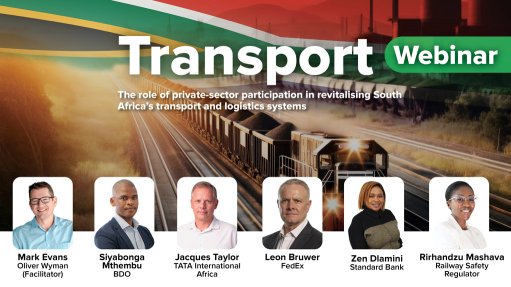Labour market transformation ticks over latest CEE report finds, new EE regulations addressed
The Commission for Employment Equity (CEE) on June 23 confirmed in its latest Employment Equity (EE) report that not much transformation has taken place in the labour market in recent years, despite many employers having committed to self-regulate on the matter.
In handing over the twenty-third CEE report, covering 2022/23, to Labour and Employment Minister Thulas Nxesi, CEE chairperson Tabea Kabinde said it was evident that the next generation would still have to battle the issue of inequality in the workplace.
The yearly CEE report unpacks the status of the EE of the labour market in the country, as reported by designated employers. The report reflects on the progress made in the implementation of the Employment Equity Act (EEA) since its enactment in 1998, which aims to eliminate unfair discrimination in the workplace and advance affirmative action measures.
The latest CEE report finds an increase in the number of reports received from employers, from 27 017 in 2021 to 27 532 in 2022, with the majority of reports (43.7%) received from Gauteng, followed by the Western Cape and KwaZulu-Natal at 20.6% and 14.8%, respectively.
About 26 000 reports were received from the private sector, covering 5.2-million employees in 2022.
Most of the reports received were from the manufacturing sector, followed by wholesale retail, trade and repair of motor vehicles, agriculture and construction.
The report finds that white people continue to dominate top management positions at 62.9%, followed by 16.9% black people, 11.2% Indians, 6.1% coloured people and 3% foreign nationals.
Males still occupy 73.5% of these top-level positions.
Worryingly, Kabinde stated, persons with disabilities comprise 1.7% of top management-level positions. She added that the private sector was doing much better than government in terms of representation of employees with disabilities.
However, the representation of females was better in government at 36.9% compared with the private sector’s 25.3% in top management positions.
The representation of black people is 73.2% in the top management positions of public sector and 13.8% in the private sector, while the white population group is represented 65.9% in the top management positions of private sector and 9.6% in government.
In senior management positions, white people occupy 50.1% of positions, followed by 26.4% for black people, 12.3% for Indians, 8.2% for coloureds and 3.1% for foreign nationals.
Males occupy 62.8% of senior management positions, and females 37.2%. Persons with disabilities constituted 1.3% at this level.
Kabinde said government had made significant progress in representing black people at senior management level, where they accounted for 74.5% of positions.
The report finds that the nationally economically active population comprises 80% black people, 9.3% coloured, 2.7% Indian and 8% white, as well as 54.4% male and 45.5% female.
The professionally qualified level of the workforce comprises 48% black people, followed by white people at 30%, coloured people at 9.9%, foreign nationals at 2.4% and Indians at 9.3%.
Males occupy just over half of professionally qualified positions, while persons with disabilities comprise 1% of the positions at this level.
In this segment, the black population group is closer to the Employment Equity Plan (EAP) in government, and under-represented in the private sector.
In skilled technical positions, black people occupy 65.3% of positions, followed by white people at 16.2%, coloured people at 11.6%, Indians at 5.3% and foreign nationals at 1.7%.
Males hold 50.6% of skilled technical positions.
Kabinde said this level of the labour market had made a lot of progress in getting EE in line with the EAP, as was the case with the semi-skilled segment, where representation comprised 79% black people, followed by coloured people at 11.8%, white people at 4.4%, Indians at 2.4% and foreign nationals at 2.2%.
Males still dominate this field, however, with 55.2% representation.
In terms of unskilled positions, 83% of them are occupied by black people, followed by coloured people at 11.1%, Indians at 0.7% and white people at 0.9%. Foreign nationals make up 3.8% of unskilled positions in the labour market.
Nxesi commented that the pace of economic transformation in South Africa was still happening at a snail’s pace, with the labour market not reflecting the demographics of the EAP and only marginal progress having been made to equitably represent previously disadvantaged groups.
In light of this slow transformation, the Department of Labour and Employment deemed it prudent to expedite the economic transformation of the country, and introduced draft amendments to the EEA, which were published for public comment in May.
Nxesi said the amendments to the Act had been met with malicious interpretations by some politicians, to further divide people among racial lines.
He addressed some of the “misinformation” that had been circulated, affirming that South Africa would not lose hundreds of thousands of jobs as a result of amendments to the regulations, particularly not in the Indian and coloured communities.
“The EEA does not allow any employer to retrench any employee whether black or white on the basis of making space for the implementation of EE targets,” Nxesi stated.
He stated that change was painful to some people that had benefited from past regimes in the country. Nxesi encouraged employers to rather adopt strategies that build inclusive workplaces, with equal opportunities for all.
Moreover, Kabinde said the amendments to the EEA had become a “hot potato” in South Africa.
She explained that the key objectives of the amendments were to reduce the regulatory burden on small businesses – those that employ less than 50 people, by declaring them as non-designated employers. Although this aims to reduce the administrative burden on companies, they will nonetheless be expected to comply with sectoral EE targets where possible.
For designated employers, with 50 or more employees, the new regulations will require them to submit a yearly EE report and comply with EE targets towards an overarching five-year sector EE target.
Kabinde added that the EEA amendments would empower Nxesi to regulate sector-specific EE numerical targets, to ensure equitable representation of suitably qualified people from designated groups. She clarified that the amendment did not aim to award the Minister with disproportionate powers in the labour market.
She emphasised that self-regulation by employers in the labour market had not worked and, therefore, the Minister was being empowered to enforce sector targets.
Kabinde clarified that no one was asking any employer to employ unqualified people.
The amendments further seek to promulgate Section 53 of the EEA for the issuing of the EE compliance certificate as a prerequisite for access to State contracts. Kabinde mentioned that the certificates would be issued by a system with no human input, therefore eliminating the possibility of bias.
Kabinde highlighted that the sector EE targets were not quotas, the latter being rigid and not flexible, with no option of justifiable reason if not met. The sector EE targets, however, were flexible in that designated employers could supply justifiable reasons for noncompliance.
She explained that these reasons include insufficient recruitment opportunities, insufficient promotion opportunities, insufficient target individuals from designated groups with the relevant qualifications and experience, a court or Commission for Conciliation, Mediation and Arbitration waiver, or economic circumstances.
The department will host national EE awareness campaigns in all nine provinces once the amendments are promulgated.
Kabinde recommended that employers consider the EAP in the region of the organisation’s operations and use the EAP and sector EE targets as benchmarks to determine what population groups are underrepresented at the different occupational levels and, where under-representation is found, make firm commitments to remediate it when undertaking future appointments or promotions.
Article Enquiry
Email Article
Save Article
To advertise email advertising@creamermedia.co.za or click here
Comments
Press Office
Announcements
What's On
Subscribe to improve your user experience...
Option 1 (equivalent of R125 a month):
Receive a weekly copy of Creamer Media's Engineering News & Mining Weekly magazine
(print copy for those in South Africa and e-magazine for those outside of South Africa)
Receive daily email newsletters
Access to full search results
Access archive of magazine back copies
Access to Projects in Progress
Access to ONE Research Report of your choice in PDF format
Option 2 (equivalent of R375 a month):
All benefits from Option 1
PLUS
Access to Creamer Media's Research Channel Africa for ALL Research Reports, in PDF format, on various industrial and mining sectors
including Electricity; Water; Energy Transition; Hydrogen; Roads, Rail and Ports; Coal; Gold; Platinum; Battery Metals; etc.
Already a subscriber?
Forgotten your password?
Receive weekly copy of Creamer Media's Engineering News & Mining Weekly magazine (print copy for those in South Africa and e-magazine for those outside of South Africa)
➕
Recieve daily email newsletters
➕
Access to full search results
➕
Access archive of magazine back copies
➕
Access to Projects in Progress
➕
Access to ONE Research Report of your choice in PDF format
RESEARCH CHANNEL AFRICA
R4500 (equivalent of R375 a month)
SUBSCRIBEAll benefits from Option 1
➕
Access to Creamer Media's Research Channel Africa for ALL Research Reports on various industrial and mining sectors, in PDF format, including on:
Electricity
➕
Water
➕
Energy Transition
➕
Hydrogen
➕
Roads, Rail and Ports
➕
Coal
➕
Gold
➕
Platinum
➕
Battery Metals
➕
etc.
Receive all benefits from Option 1 or Option 2 delivered to numerous people at your company
➕
Multiple User names and Passwords for simultaneous log-ins
➕
Intranet integration access to all in your organisation





















